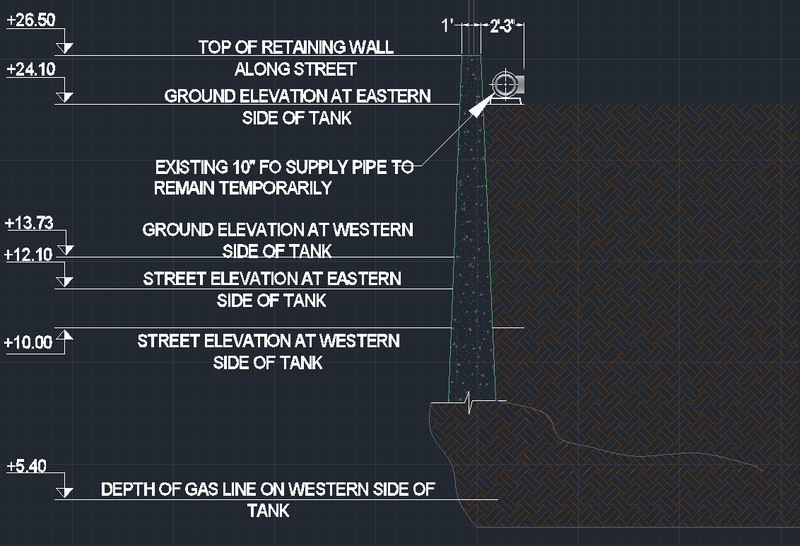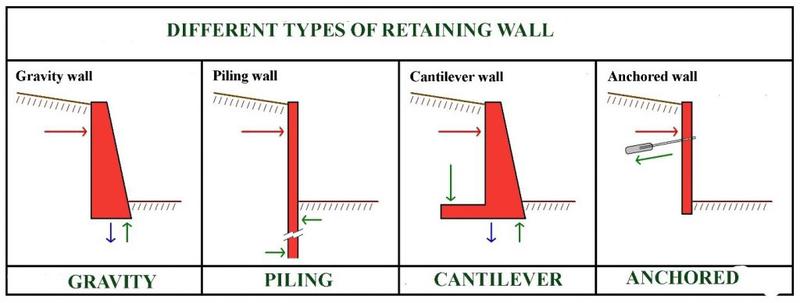
Lateral Earth Pressure
Lateral earth pressure is the principal factor surrounding retaining wall design. The lateral earth pressure is a component of the unit weight of the soil, its coefficient of soil friction, and the location of the water table. The three major types of wall failure stemming from lateral earth pressure are as follows:
- Settling – soil must be able to bear the sum of the vertical forces
- Sliding – a combination of the wall weight and the coefficient of soil friction must be considered
- Overturning – a wall that has a high center of gravity may be toppled by a strong horizontal force exerted by the soil
Water Table Effects on Retaining Walls
It is critical to provide drainage of water that may accumulate on the weight-bearing side of the wall, which can lead to failure by any of the means listed above. Water can not only loosen the soil, decreasing its bearing capacity, but also adds additional weight leading to an increase in lateral pressure. “Weepholes”, cylindrical horizontal penetrations of the wall, should be installed immediately above grade to allow water to drain. Porous backfill should be placed on the weight-bearing side of the wall where weepholes are located to establish flow. Additionally, filter material is recommended to prevent migration of soils and other materials into the wall penetrations.
Types of Retaining Walls
Gravity retaining walls use their large mass as the sole factor in counteracting the pressure exerted by the earth. Piling walls are most commonly used in a temporary situation such as a construction excavation, but are not the best choice for long term stability against large pressures. The most common type is the cantilever wall, which has a large footing which helps to transfer horizontal forces downwards to the ground below. These walls are typically preferable to gravity retaining walls because much less material is necessary equating to a lower cost of construction. The final example is an anchored retaining wall, which utilizes high-strength cables tied into adjacent rock or soil. This counteracts the horizontal forces perpendicular to the weight-bearing side of the wall.
Several variations of retaining walls are shown in the photo below:
Source: aboutcivil.org
Engineering Services
Walden has a group of experienced professional engineers that can help with retaining wall design for your site stabilization or construction project. Please contact us at (516) 624-7200 to discuss your next project.

